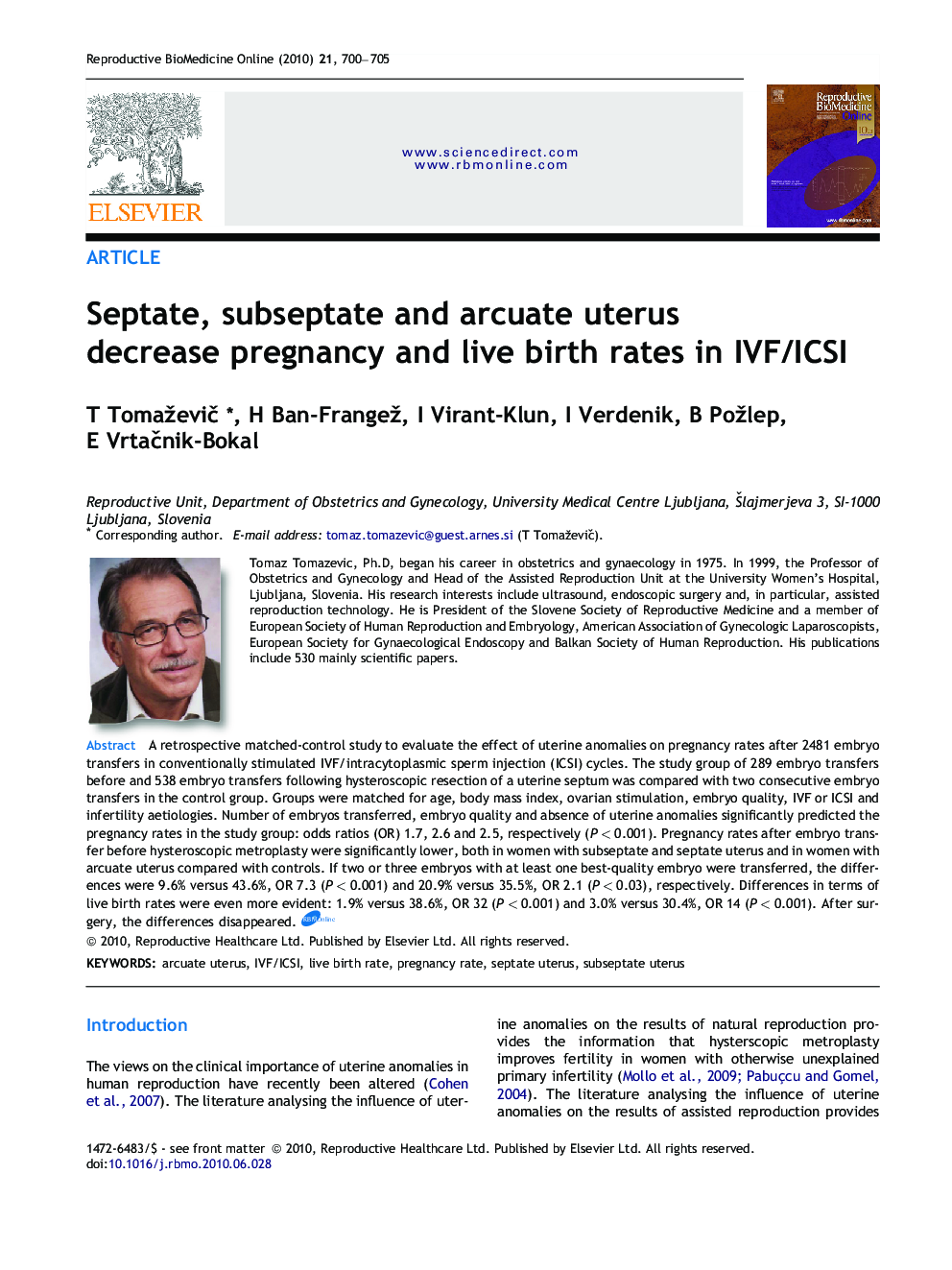| کد مقاله | کد نشریه | سال انتشار | مقاله انگلیسی | نسخه تمام متن |
|---|---|---|---|---|
| 3971365 | 1256762 | 2010 | 6 صفحه PDF | دانلود رایگان |

A retrospective matched-control study to evaluate the effect of uterine anomalies on pregnancy rates after 2481 embryo transfers in conventionally stimulated IVF/intracytoplasmic sperm injection (ICSI) cycles. The study group of 289 embryo transfers before and 538 embryo transfers following hysteroscopic resection of a uterine septum was compared with two consecutive embryo transfers in the control group. Groups were matched for age, body mass index, ovarian stimulation, embryo quality, IVF or ICSI and infertility aetiologies. Number of embryos transferred, embryo quality and absence of uterine anomalies significantly predicted the pregnancy rates in the study group: odds ratios (OR) 1.7, 2.6 and 2.5, respectively (P < 0.001). Pregnancy rates after embryo transfer before hysteroscopic metroplasty were significantly lower, both in women with subseptate and septate uterus and in women with arcuate uterus compared with controls. If two or three embryos with at least one best-quality embryo were transferred, the differences were 9.6% versus 43.6%, OR 7.3 (P < 0.001) and 20.9% versus 35.5%, OR 2.1 (P < 0.03), respectively. Differences in terms of live birth rates were even more evident: 1.9% versus 38.6%, OR 32 (P < 0.001) and 3.0% versus 30.4%, OR 14 (P < 0.001). After surgery, the differences disappeared.This retrospective matched control study evaluated the influence of septate, subseptate and arcuate uterus on pregnancy and live birth rates after 2481 in conventionally stimulated IVF/intracytoplasmic sperm injection (ICSI) cycles. The study group included 827 embryo transfers (289 embryo transfers before and 538 embryo transfers following hysteroscopic resection of uterine septum ans was compared with two consecutive mebryo transfers in the control group. Both groups were matched by age, body mass index, stimulation protocol, quality of embryos, use of IVF or ICSI, and infertility aetiologies. Multivariate logistic regression analysis of the study group showed that the number of embryos, embryo quality and the absence of uterine anomalies significantly predicted the pregnancy rates: odds ratios (OR) 1.7, 2.6, and 2.5, respectively (P < 0.001). The pregnancy and live birth rates before surgery were lower compared with controls, both in women with subseptate or septate uterus and in women with arcuate uterus. If two or three embryos with at least one best quality embryo were transferred, the differences in terms of pregnancy rates were 9.6% versus 43.6%, OR = 7.3 (P < 0.001) and 20.9% versus 35.5%, OR = 2.1 (P < 0.03), respectively. The differences in terms of live birth rates were even more evident: 1.9% versus 38.6%, OR = 32 (P < 0.001) and 3.0% versus 30.4%, OR = 14 (P < 0.001). After surgery, the differences disappeared. Negative impact of uterine anomalies on pregnancy and on live birth rates are two important arguments for treating uterine anomalies in infertile women.
Journal: Reproductive BioMedicine Online - Volume 21, Issue 5, November 2010, Pages 700–705